The Blue Mosque, built during the early 17th century, holds immense historical and cultural significance for the people of Turkey. Sultan Ahmed I commissioned the construction of a mosque to rival the grandeur of the Hagia Sophia, and the building of this masterpiece commenced in 1609, concluding in 1616.
The Blue Mosque not only served as a place of worship but also as a symbol of the Ottoman Empire’s power and influence. It stands as a testament to the architectural brilliance of the time and the cultural heritage of the Turkish people.
Quick facts about the Blue Mosque
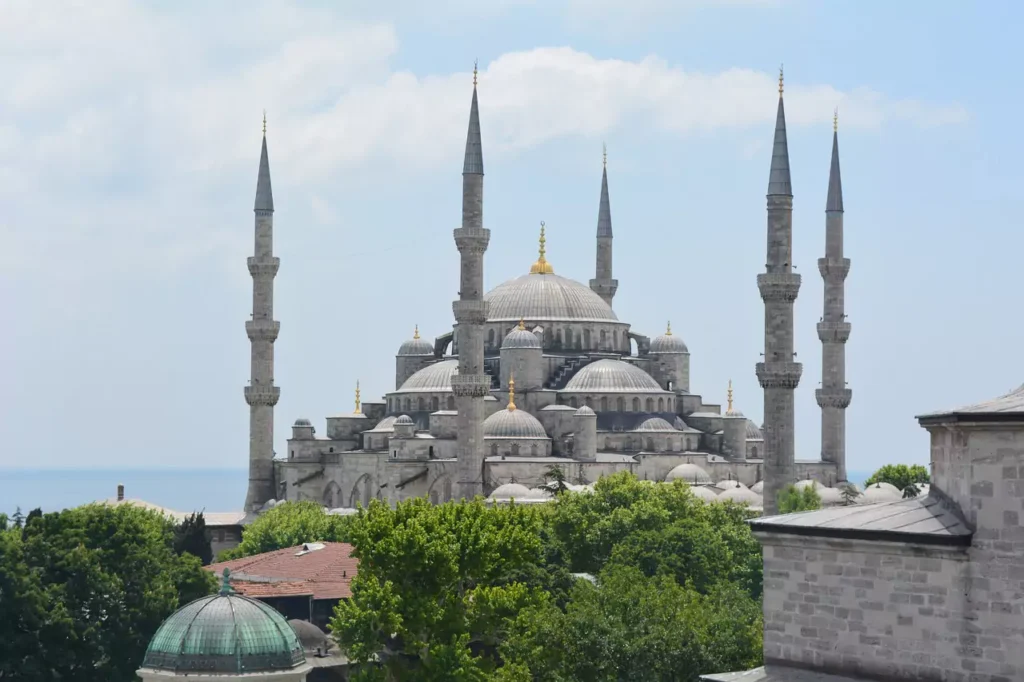
- Originally named Sultanahmet Camii, the mosque earns its “Blue Mosque” nickname from the stunning blue tiles that embellish its interior, resulting in both “Sultanahmet Mosque” and “Blue Mosque” being prevalent monikers for this historic place of worship.
- Where is the Blue Mosque? Situated in the heart of Istanbul’s historic district, the Blue Mosque stands proudly facing the Hagia Sophia. Its prime location allows visitors to easily explore other iconic landmarks such as the Topkapi Palace and the Grand Bazaar, making it a must-visit destination for tourists from around the world.
- When was the Blue Mosque built? Construction of the Sultanahmet Mosque began in 1609 and was completed in 1616. It took a total of seven years to build this masterpiece of Islamic architecture. The meticulous attention to detail and the intricate craftsmanship that went into its construction is evident in every aspect of the mosque.
- Why is it called Blue Mosque? One of the most intriguing aspects of the Blue Mosque is its name. Thousands of handcrafted blue tiles, skillfully crafted by the finest artisans of the time, adorn the mosque, creating a mesmerizing effect when you view it from the inside. These tiles are the very reason behind the mosque’s nickname, the “Blue Mosque.”
- Are Hagia Sophia and Blue Mosque the same? Although the Blue Mosque and Hagia Sophia are both iconic landmarks in Istanbul, they are distinct in their own ways. While the Sultanahmet Mosque is a place of worship for Muslims, Hagia Sophia was originally built as a Christian cathedral and later converted into a mosque. Both structures hold immense historical and architectural significance and are a testament to the multicultural heritage of Istanbul.
Historical Significance of the Blue Mosque
The construction of the Blue Mosque was not only a testament to Sultan Ahmed I’s ambition but also a strategic move to establish Istanbul as a major cultural and religious center. The mosque was intended to rival the nearby Hagia Sophia, which had been converted into a mosque after the Ottoman conquest of Constantinople.
During its early years, the Sultanahmet Mosque played a crucial role in showcasing the power and wealth of the Ottoman Empire. It became a symbol of the Sultan’s authority and a place where important events, such as royal ceremonies and state celebrations, took place.
However, the Blue Mosque also holds a darker historical significance. It was built using the spoils of war, including the wealth and treasures looted from conquered lands. This aspect of its history serves as a reminder of the complex and often controversial nature of the Ottoman Empire.


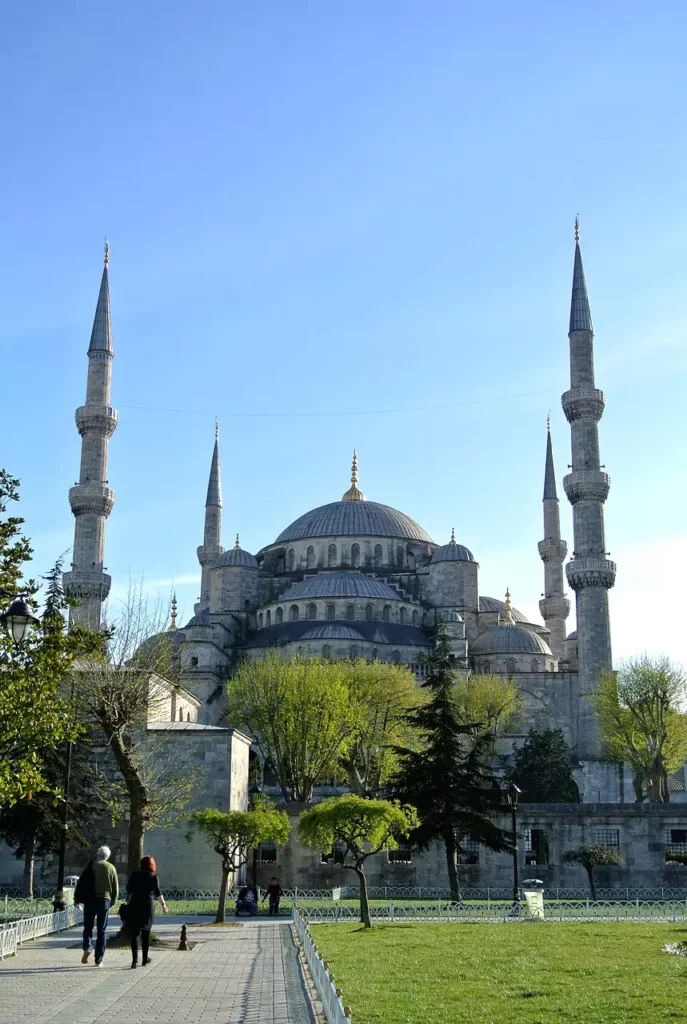
Cultural and Religious Importance of the Blue Mosque
Beyond its historical significance, the Blue Mosque holds immense cultural and religious importance for the people of Istanbul and Muslims around the world. It serves as a place of worship and community, where Muslims gather to pray and connect with their faith.
The interior of the Sultanahmet Mosque is a breathtaking display of artistry and devotion. The walls are adorned with intricate patterns and calligraphy, while the high ceilings are adorned with delicate chandeliers. The overall effect is one of serenity and spiritual transcendence.
The Blue Mosque also plays a vital role in preserving and promoting Islamic culture. It hosts various religious and cultural events throughout the year, including Quran recitation competitions, lectures, and workshops. These events serve to educate and inspire both locals and visitors alike, fostering a deeper understanding and appreciation of Islamic traditions.
Architectural features of the Blue Mosque
Built in the early 17th century, during the reign of Sultan Ahmed I, the Blue Mosque is renowned for its exquisite blue-tiled interior, from which it gets its name.
The construction of the Blue Mosque was a monumental undertaking, involving thousands of workers and craftsmen. The architects, Sedefkâr Mehmed Ağa and Sedefkar Mehmet Aga, carefully planned every aspect of the mosque, ensuring that it would be a masterpiece of design and engineering.
The Sultanahmet Mosque is a true architectural masterpiece, blending elements of both Byzantine and Ottoman design. Its symmetrical layout, towering minarets, and cascading domes are a sight to behold. The main dome of the mosque, which is 23.5 meters in diameter, is surrounded by smaller domes and half-domes, creating a sense of harmony and balance.
The mosque’s most striking feature is its six minarets, which were considered a bold architectural move at the time. Legend has it that when the Sultan ordered gold (altın) minarets, the architect misunderstood it as six (altı) minarets. Rather than correcting the mistake, the Sultan decided to build six minarets, making the Sultanahmet Mosque one of the few mosques in the world with such a feature.

Exploring the interior of the Blue Mosque
The interior of the Blue Mosque is equally breathtaking. Intricate calligraphy and geometric patterns adorn the walls, beautiful chandeliers embellish the high ceilings, and the exquisitely decorated mihrab, a niche indicating the direction of Mecca, features marble and mother-of-pearl, all contributing to the grandeur of the mosque.
Stepping inside the Sultanahmet Mosque is like entering a different world altogether. The vast prayer hall, with its high ceilings and soft lighting, creates a serene and peaceful atmosphere. The carpeted floor invites visitors to sit and contemplate, while the intricately designed windows allow streams of sunlight to filter through, creating a magical ambience.
Before entering the mosque, visitors must take off their shoes as a respectful gesture. Additionally, women must cover their heads with a scarf, and both men and women should wear modest clothing. This allows everyone to appreciate the spiritual and cultural significance of the Blue Mosque.
The stunning tiles of the Blue Mosque
One of the defining features of the Blue Mosque is its stunning blue tiles. Skilled artisans handcrafted these tiles, showcasing the Ottoman Empire’s exquisite craftsmanship.The intricate designs and vibrant colors of the tiles depict various floral and geometric patterns, creating a visual feast for the eyes.
The blue tiles not only add to the aesthetic beauty of the mosque but also serve a practical purpose. They help to keep the interior cool during the hot summer months by reflecting the sunlight. This clever architectural design guarantees that both worshippers and visitors can relish the mosque’s tranquility without the heat overwhelming them.
Restoration and Preservation Efforts of the Sultanahmet Mosque
Over the centuries, the Blue Mosque has undergone numerous renovations and restoration efforts to ensure its preservation. The most significant restoration project took place in the 20th century, following a devastating earthquake in 1894. The restoration team painstakingly revived the mosque to its past glory, ensuring the preservation of its original architectural integrity.
Today, the Turkish government and various organizations continue to invest in the maintenance and upkeep of the Blue Mosque. These efforts include regular cleaning, repairs, and the use of modern technologies to monitor the structural stability of the mosque.
Lesser-Known Facts and Anecdotes About the Sultanahmet Mosque
While the Blue Mosque is well-known for its architectural splendor, there are several lesser-known facts and anecdotes that add to its allure. For instance, the mosque’s courtyard is home to a beautiful ablution fountain, where worshippers perform ritual ablutions before prayer.
Another intriguing fact lies in the Blue Mosque’s initial design, which intended for it to be larger and surrounded by a complex of buildings. However, financial constraints and the Sultan’s untimely death prevented the full realization of the original plans.

Important details to know before visiting the Blue Mosque
Before planning your visit to the Blue Mosque, there are a few important details to keep in mind. The mosque is open to visitors throughout the year, except during prayer times. It is advisable to check the opening hours in advance to avoid any disappointment. The entrance to the mosque is free, but donations are appreciated to help with its maintenance and upkeep.
When inside the mosque, remember to maintain a quiet and respectful demeanor. Avoid loud conversations or any behavior that may disturb others. Photography is generally allowed, but it is important to be mindful of other visitors and to avoid photographing people without their consent.
Opening hours and entrance fee of the Blue Mosque
The Sultanahmet Mosque is open to visitors from early morning until late in the evening. The exact opening hours may vary depending on the time of year and prayer times. It is best to visit during non-prayer times to fully experience the tranquility and beauty of the mosque.
There is no entrance fee to visit the Blue Mosque, making it accessible to all. However, donations are welcomed and greatly appreciated to support the preservation of this architectural treasure.
Tips for a memorable visit to the Blue Mosque
To make the most out of your visit to the Sultanahmet Mosque, here are a few tips to keep in mind:
- Plan your visit during non-prayer times to avoid any disruptions.
- Dress modestly and respectfully, ensuring that your shoulders and knees are covered. Learn more about the dress code in the Blue Mosque.
- Women are required to cover their heads with a scarf.
- Remove your shoes before entering the mosque.
- Maintain a peaceful and quiet demeanor inside the mosque.
- Take your time to explore the intricate details and soak in the spiritual atmosphere.

Best time to visit the Blue Mosque
The Blue Mosque attracts a large number of visitors throughout the year, so it is important to consider the best time to visit. Early mornings and late afternoons tend to be less crowded, allowing for a more peaceful and intimate experience. However, the mosque’s beauty transcends the number of visitors, and regardless of the time you choose to visit, you are sure to be captivated by its grandeur.
How to go to the Blue Mosque?
Reaching the Sultanahmet Mosque is relatively easy due to its central location in Istanbul. If you are staying in the city, you can easily walk or take a short taxi ride to the mosque. Public transportation options such as buses and trams also provide convenient access to the area. Just take the tram line T1 and leave at Sultanahmet station. Keep in mind that you need an Istanbulkart for public transport.
What to wear when visiting a mosque?
When visiting a mosque, it is essential to dress modestly and respectfully to show your appreciation for the religious and cultural significance of the place. People of all genders should wear clothing that covers their shoulders and knees and women must cover their heads with a scarf. It’s important to wear comfortable shoes because you will need to remove them before entering the mosque.

Other attractions near the Blue Mosque
The Sultanahmet Mosque is located in the historic Sultanahmet area of Istanbul, which is home to many other prominent landmarks. After exploring the mosque, take the time to visit the nearby Hagia Sophia, an architectural marvel that once served as a cathedral and later a mosque. The Topkapi Palace, with its stunning gardens and rich history, is also within walking distance. Additionally, the bustling Grand Bazaar is a must-visit for those looking to indulge in a unique shopping experience.
Conclusion
Visiting the Blue Mosque is a journey through time and a chance to immerse oneself in the rich history and culture of Istanbul. From its awe-inspiring architecture to its breathtaking interior, every aspect of the mosque tells a story and leaves a lasting impression on all who visit. As you step inside the Sultanahmet Mosque, prepare to be enchanted by its beauty, tranquility, and the secrets that lie within its walls.
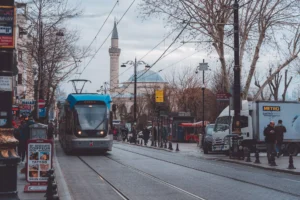
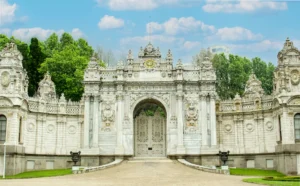


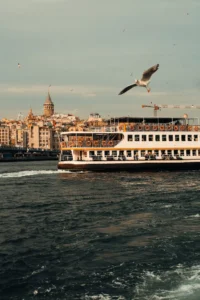
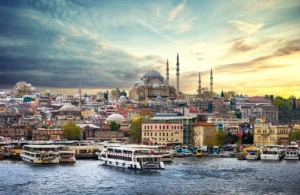
[…] Blue Mosque […]
[…] Blue Mosque […]
[…] Blue Mosque […]